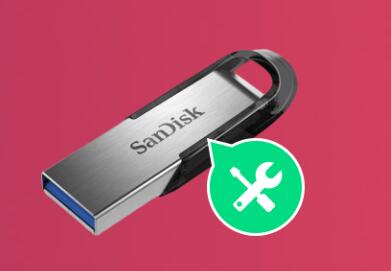USB flash drives are one of the most commonly used portable storage devices, valued for their convenience, compatibility, and speed. But like all storage media, they can become corrupted. When that happens, data may become inaccessible, the drive may stop showing up on your computer, or you may be prompted to format it.
USB Flash Drive Corruption
Corruption typically occurs when the file system is damaged. This can be due to a variety of causes:
Improper ejection during data transfer

Virus or malware infections
Power failure during usage
Faulty USB ports or low-quality USB hubs
Physical damage or manufacturing defects
Logical errors such as bad sectors or file allocation issues
Common Symptoms of USB Flash Drive Corruption
The drive does not show up on your PC
The drive shows a message like “Please insert a disk into USB drive”
You are asked to format the drive when inserted
File transfer fails or files go missing
The drive appears as RAW in Disk Management
Before You Begin: Key Precautions
Stop Using the Drive: Prevent further data loss by avoiding writing new data to the USB stick.
Use Another USB Port or Device: Rule out port or system-specific issues.
Backup What You Can: If the drive mounts, copy all accessible files to another location.
Methods to Fix a Corrupted USB Flash Drive
Method 1: Use Windows Error Checking Tool
Insert the USB drive.
Go to “This PC”, right-click the USB drive, and choose “Properties.”
Click the “Tools” tab, then select “Check.”
Let Windows scan and repair the file system.
Method 2: Run CHKDSK Command
Connect your USB flash drive.
Open Command Prompt as Administrator.
Enter: chkdsk X: /f /r (replace X with the drive letter).
Allow the system to check and repair errors.
Method 3: Change the Drive Letter
Sometimes, a simple drive letter conflict is the cause:
Open Disk Management.
Right-click the USB drive and choose “Change Drive Letter and Paths.”
Assign a new letter and save.
Method 4: Reinstall USB Controllers
Open Device Manager.
Expand “Universal Serial Bus controllers.”
Right-click on each USB Root Hub and uninstall.
Restart your computer, which reinstalls drivers automatically.
Method 5: Use Linux or Mac for Access
Sometimes, other operating systems can read corrupted drives:
Boot into a Linux Live USB environment.
Connect the USB and check if it’s mounted.
If mounted, copy the data elsewhere.
Run sudo fsck /dev/sdX in Terminal to check for errors.
Method 6: Use Panda Assistant or Other Data Recovery Tools
A corrupted or malfunctioning USB flash drive can quickly become a major problem especially when it holds important documents, photos, or work files. That’s where Panda Assistant comes in. It’s an intuitive, user-friendly tool specifically designed to fix and recover data from USB flash drives, even when they seem unreadable, corrupted, or inaccessible.
For users who’ve accidentally deleted files or formatted the drive, Panda Assistant offers powerful data recovery. It can retrieve photos, videos, documents, and more even from drives that Windows can’t read. With support for major file systems like FAT32. exFAT, and NTFS, and compatibility with all major USB brands, it’s a flexible solution for nearly any situation.
Method 7: Diskpart (Last Resort – Erases Data)
Only if recovery fails and you accept data loss:
Open Command Prompt as Admin.
Type:
diskpart
list disk
select disk X (USB drive)
clean
create partition primary
format fs=fat32 quick
Preventing USB Flash Drive Corruption
Always eject the drive safely.
Avoid removing during file transfers.
Don’t use low-quality or unbranded USB drives.
Scan for malware regularly.
Avoid full-capacity storage.
Store in a safe, dry place.
Fixing a corrupted USB flash drive involves a mix of troubleshooting methods and careful recovery attempts. Always begin with non-destructive methods like CHKDSK, drive reassignment, and recovery tools. Formatting should only be your last resort. With tools like Panda Assistant, you can scan and restore files while preserving the integrity of your USB device. As always, prevention is the best cure—handle your USB drives with care, and back up important data regularly.
About us and this blog
Panda Assistant is built on the latest data recovery algorithms, ensuring that no file is too damaged, too lost, or too corrupted to be recovered.
Request a free quote
We believe that data recovery shouldn’t be a daunting task. That’s why we’ve designed Panda Assistant to be as easy to use as it is powerful. With a few clicks, you can initiate a scan, preview recoverable files, and restore your data all within a matter of minutes.

 Try lt Free
Try lt Free Recovery success rate of up to
Recovery success rate of up to









